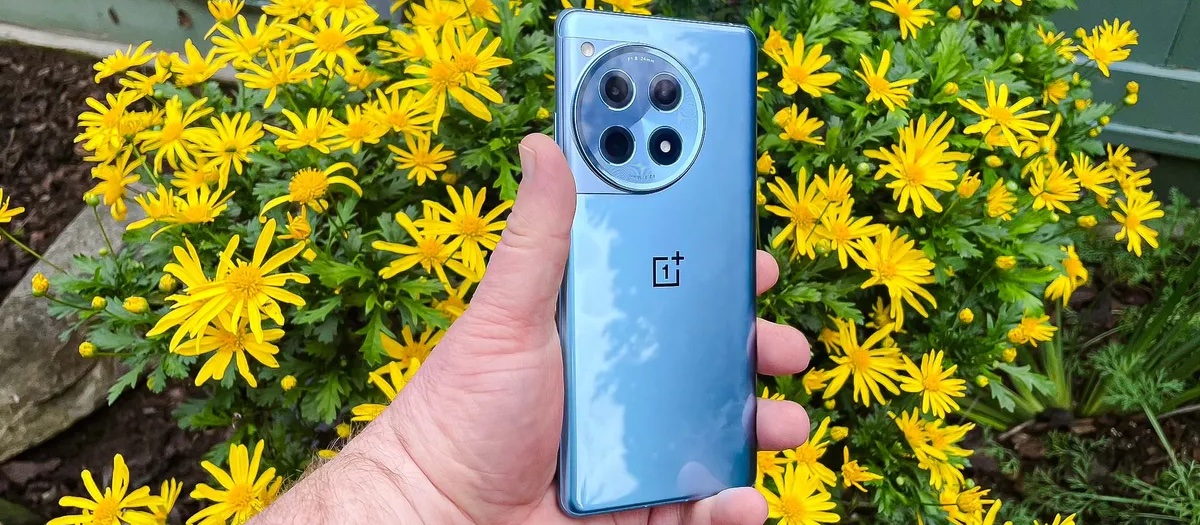Tom's Guide Verdict
The OnePlus 12R delivers outstanding performance and record-setting battery life for an amazingly low price (especially in the U.S.). Its camera performance can’t quite keep up with the Google Pixel 7a, but in other areas, the OnePlus 12R is one of the best midrange models out there.
Pros
- +
Epic battery life
- +
Strong Snapdragon performance
- +
Bright, colorful display
- +
Compelling budget price in the U.S.
Cons
- -
No wireless charging
- -
Cheaper model not available in Europe
- -
Software support could be longer
Why you can trust Tom's Guide
Somehow, OnePlus has managed to upstage its own flagship phone. Right now, we should be talking about the OnePlus 12, an excellent update to the leading phone in the upstart phone maker’s lineup. But instead, I’ve got the OnePlus 12R on my mind.
The R series takes the current OnePlus flagship and scales back some features in exchange for a lower price. And while the OnePlus 12R isn’t the first R series device OnePlus has ever made, it is the first one to launch outside of India and China. Given how well this phone performed in our testing, I’m willing to wager that it won’t be the last.
This OnePlus 12R review looks at how this midrange device differs from the OnePlus 12 and how it fares against other handsets in its price range. Not to spoil things early, but other midrange smartphones have a reason to start sweating.
OnePlus 12R review: Specs
| Prices | $499; $599/£649 |
| Screen size | 6.78 inches |
| Refresh rate | 120Hz |
| CPU | Snapdragon 8 Gen 2 |
| RAM | 8GB/16GB |
| Storage | 128GB/256GB |
| Rear cameras | 50MP main, 8MP ultrawide, 2MP macro |
| Front camera | 16MP |
| Battery size | 5,500 mAh |
| Battery life (Hrs:Mins) | 18:42 |
| Size | 6.4 x 3 x 0.35 inches (163.3 x 75.3 x 8.8 mm) |
| Weight | 7.3 ounces (207 grams) |
| Colors | Gray, blue |
OnePlus 12R review: Price and availability
The OnePlus 12R goes on sale February 13 in the U.S. and U.K. And when it does, there’s a good news/bad news situation depending on where you live in the world. The starting price of the OnePlus 12R is super cheap — $499 for a model with 8GB of RAM and 128GB of storage. That matches the price of the Pixel 7a, which has been one of the best cheap phones under $500 since its debut last year.
There’s just one problem with that low-price OnePlus12R: that model won't be available to European shoppers.
Instead, parts of the world, including the U.K., will have just one choice for the OnePlus 12R: a model with 16GB of memory plus 256GB storage that sells for $599/£649. If there's a silver lining there, it's that those are some pretty impressive memory and storage specs, despite that it's UFS 3.1 storage instead of the promised UFS 4.0. Even at $599, the OnePlus 12R is still relatively cheap compared to flagship phones, matching the starting price of Samsung’s Galaxy S23 FE.
OnePlus 12R review: Design
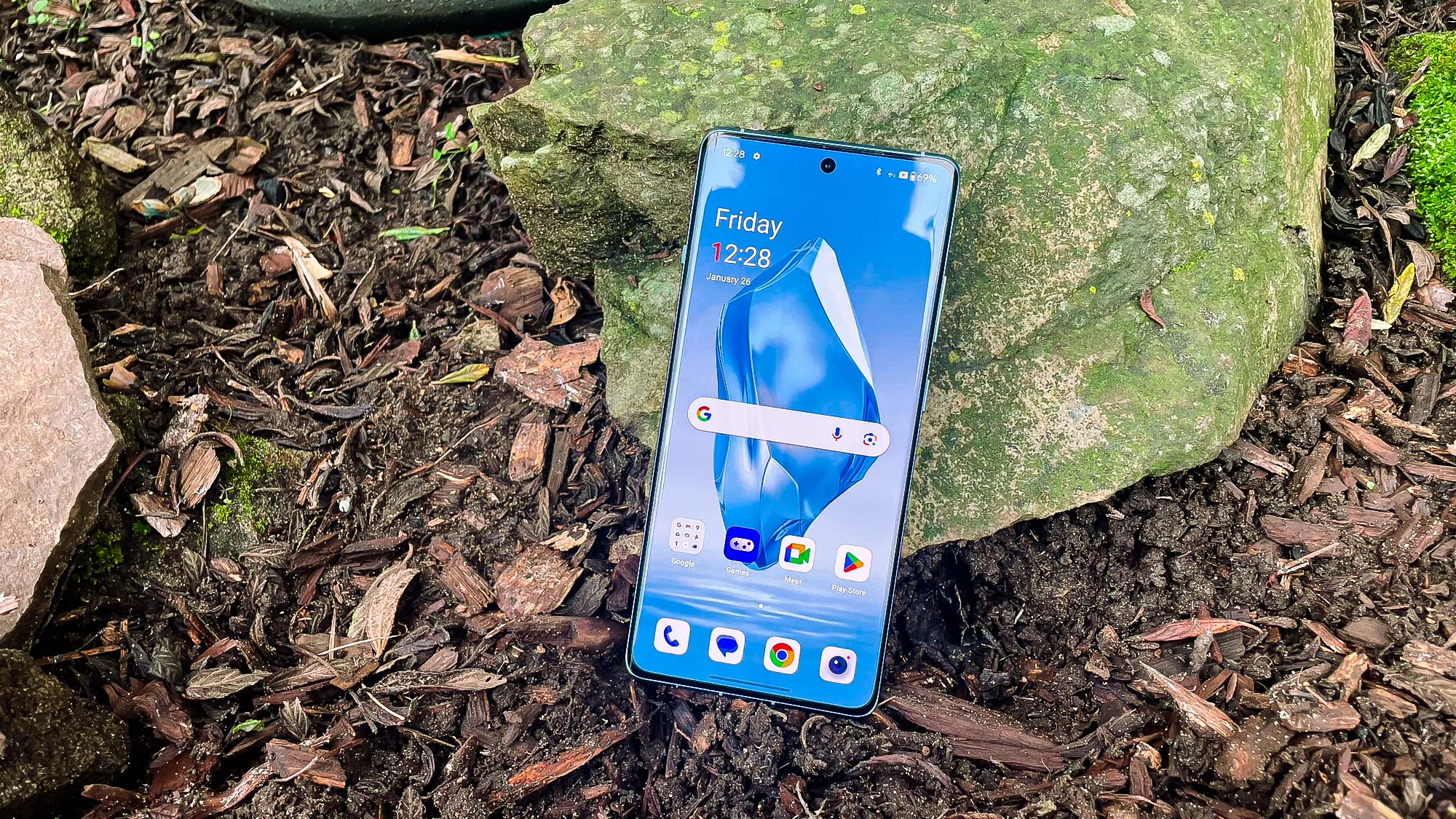
The OnePlus 12R is the less expensive of the two new phones from OnePlus, but you wouldn't know it from looking at the device. The 12R mimics the OnePlus 12's design, right down to the circular camera array on the back of the phone.
The OnePlus 12R doesn't feel cheap either. It's got an aluminum frame that's solidly built. If I have a complaint, it’s that it feels as if there’s a slight ridge at the bottom of the phone where the display meets the OnePlus 12R frame. The alert slider, missing in action on the OnePlus 10T, is on the left side of the phone, with volume and power buttons on the opposite side. An in-display fingerprint sensor unlocks the phone and proved to be very fast and accurate in my testing.
We’ve criticized the OnePlus 12 for having an IP65 water resistance rating, as that’s far weaker than what you’d expect from a flagship device. The OnePlus 12R downgrades that to an IP64 rating, which means a splash of water is probably fine. Contrast that with the Pixel 7a and Galaxy A54, which have IP67 ratings and can survive a 1-meter dunk in water.
I find the blue shade of my OnePlus 12R review unit to be rather striking. (There's also a gray color option.) The reflective, almost mirror-like surface of the OnePlus 12R's back looks pretty smart, too, though it does pick up fingerprints fairly easily.
OnePlus 12R review: Display
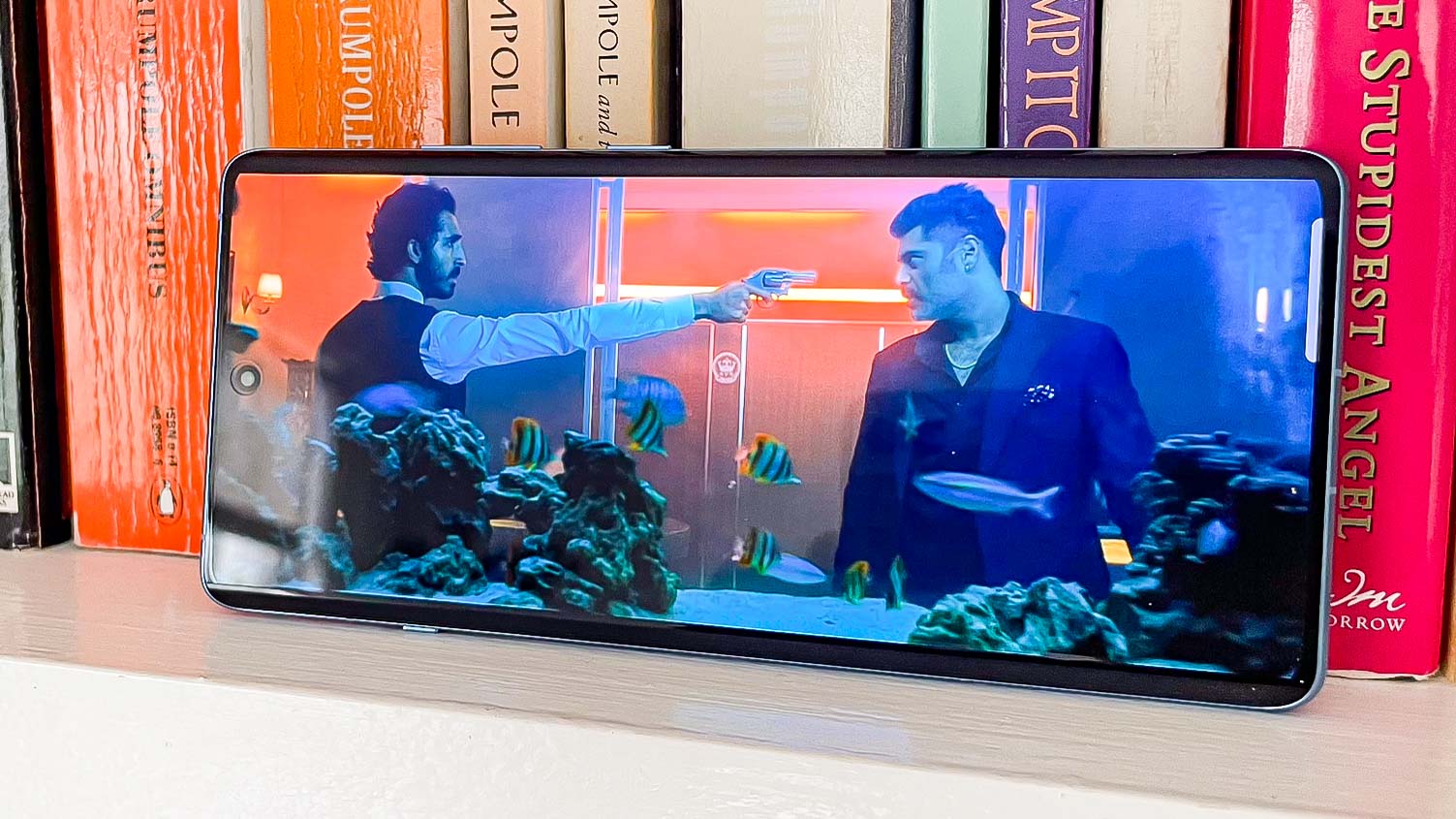
The OnePlus 12R's screen is fractionally smaller than the 6.82-inch panel featured on the OnePlus 12. At 6.78-inches, the OnePlus 12R is closer in size to last year's OnePlus 11.
OnePlus uses an LTPO panel for the 12R, a decision that enables the phone to adjust the refresh rate on its display for smoother scrolling. The OnePlus 12R's refresh rate will be able to reach 120Hz. A growing number of lower-cost phones can support that higher refresh rate, but it’s still good to see.
Bezels around the screen are minimal to the point where the display starts to curve around each side of the OnePlus 12R. In the past, such a design has encouraged inadvertent touches, and it can be difficult interacting with elements toward the edge of the screen; that didn’t prove to be the case during my time with the OnePlus 12R, but I know that not everyone’s a fan of curved screens.
OnePlus says that theOnePlus 12R's screen can deliver the same peak brightness of 4,500 nits as the OnePlus 12, with HDR hitting 1,600 nits. Those are big numbers — to put things in context, the Galaxy S24 flagships feature a maximum brightness of 2,600 nits. So OnePlus is promising an extremely bright display.
Phone makers’ peak brightness measurements are usually achieved under conditions difficult for the average user to recreate, so you’ll rarely see a phone hit that mark. In our testing, the OnePlus 12R fell very short of its promised brightness, peaking at 1,131 nits on our light meter. That may seem like a big miss, but we’ve run into challenges with some OnePlus phones when it comes to brightness readings. I would also say that measurement doesn’t reflect my actual experience with the phone, as I found the OnePlus 12R screen very easy to use, even in direct sunlight without having to crank up the brightness. You may not get that promised 4,500-nit screen in your OnePlus 12R usage, but you’ll be able to see everything on the display just fine.
| OnePlus 12R | Google Pixel 7a | |
| Screen size | 6.78 inches | 6.1 inches |
| Refresh rate | 120Hz | 90Hz |
| sRGB Percentage | 160.7% (Vivid), 113.2% (Natural) | 129.8% (Adaptive), 111.7% (Natural) |
| DCI-P3 color spectrum | 113.8% (Vivid), 80.2 (Natural) | 91.9% (Adaptive), 79.1% (Natural) |
| Delta-E rating | 0.39 (Vivid), 0.21 (Natural) | 0.05 (Adaptive), 0.11 (Natural) |
I found the OnePlus 12R screen to be pretty colorful, too. In the trailer for Monkey Man, the lights danced off a silver Jaguar hood ornament in a very evocative way, while I enjoyed the sight of a campfire flickering on Jeff Bridges’ face while streaming True Grit on Peacock. Testing backed up my experience here, with the OnePlus 12R capturing 113.8% of the DCI-P3 color spectrum with the display set to its default Vivid mode. The Pixel 7a tops out at 91.9% to put that result in context.
Colors could be more accurate, as the Delta-E rating for the OnePlus 12R’s Vivid mode is 0.39; switching to Natural mode improves things to 0.21. (The closer to zero, the more accurate the colors.) The Pixel 7a hits 0.11 in Natural mode.
OnePlus 12R review: Cameras
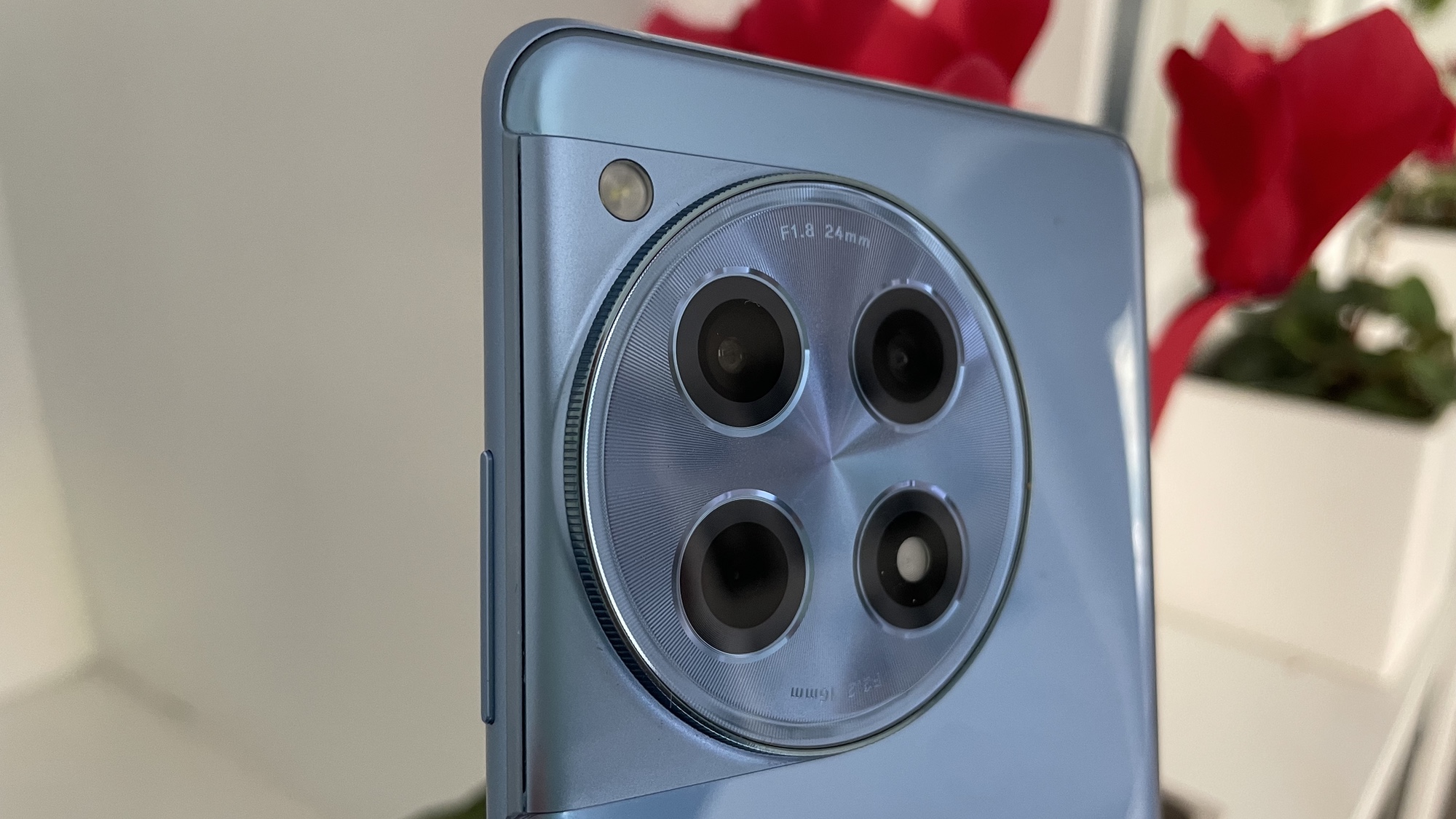
You've got to make some compromises in order to bring the OnePlus 12R in for less than the OnePlus 12. One of those areas involves the OnePlus 12R's camera setup, which ditches the telephoto lens found in the regular OnePlus 12's setup. Instead, an ultrawide angle lens and macro sensor join a 50MP main camera. That 8MP ultrawide lens offers a 112-degree field of view.
There's something else missing from the OnePlus 12R camera setup — any mention of the Hasselblad branding that's appeared on OnePlus flagships in recent years. OnePlus' partnership with the lens specialist has spurred a decided improvement in photo quality for the company's premium phones. Whereas cameras used to be the weak spot for a OnePlus flagship, we've gotten to the point where recent releases can hold their own against the best camera phones.
To find out if Hasselblad’s lack of involvement hurts the camera performance of the OnePus 12R, I took some head-to-head shots against the Pixel 7a, which produces the best pictures of any lower-cost camera phone. Here’s how the face-off turned out.
The OnePlus 12R does a pretty good job with this plate of scrambled eggs, with much more vibrant colors of the peppers and cheese than the Pixel 7a photo offers. That’s not surprising, as the Pixel 7a tends to favor darker tones in my experience. Where Google’s phone tops the OnePlus 12 is how it deals with the light streaming in from the window behind the shot — lightning looks even throughout the Pixel 7a photo, while the top of the OnePlus 12 shot looks a little overexposed.
The OnePlus 12R also highlights richer colors when I got up close with a rose. You can see hints of pink in the petals featured in the 12R’s shot that aren’t visible in the Pixel 7a photo. However, the Pixel 7a keeps the flower more in focus, to the point where you can make out drops of water on the petals. Those aren’t as visible in the OnePlus 12R effort.

However, when I turned to the macro lens on the OnePlus 12R — a feature the Pixel 7a doesn’t offer, by the way — those water drops came into focus. Even better, the pinkish tint to the petals remained intact. My only complaint would be the lack of focus around the petal edges, where the rose tends to blend in with the background.
I’m not entirely convinced that dedicated macro lenses are necessary, and I feel that phone makers often use them to inflate a phone’s camera count. That said, if you have to go with a macro lens, it should at least perform as what I’ve seen from the OnePlus 12R’s version.
A photo of a Gambit action figure once again illustrates the issues the OnePlus 12R’s cameras run into if there’s challenging light. This room doesn’t have a lot of natural light, so the 12R compensates by pumping up the color — note the bright reds and dark browns on Gambit’s costume. The full image looks OK, if a little flat. The Pixel 7a downplays color for a more even tone throughout, and as a result, the coolest of all the X Men stands out a little more distinctly from the books and framed Dusty Baker photo in the background.
Thus far, the OnePlus 12R has kept pace with the Pixel 7a’s camera pretty well, but it begins to lag a little when you start testing out speciality photo features. There’s nothing really wrong with this shot of my daughter capture in portrait mode. The 12R has a very stylish background blur, colors look accurate and skin tones are acceptable, if not as warm as what the Pixel 7a produces. It’s the border between my daughter and the background of the shot that I take issue with — it’s a little choppy in the 12R shot, particularly around her hair. The separation looks a lot more natural in the Pixel 7a portrait, so the overall effect is more pleasing.
Night mode isn’t much of a contest. A photo of some tiki mugs nest to a pink lady apple just isn’t bright enough when captured by the OnePlus 12A. The tauntaun mug in the middle looks out of focus, too. The Pixel 7a’s shot is much brighter, and all the mugs are stand out distinctly from the background. You can even see details in the wood grain of the planter I’ve placed the mugs on.
Turning to the ultrawide camera, the OnePlus 12R and Pixel 7a capture nearly identical photos of a Victorian home in my neighborhood. The Pixel 7a’s preference for dark colors doesn’t serve it well here, as I prefer the brighter tree leaves in the OnePlus 12R shot.
Neither the OnePlus 12R or Pixel 7a has a telephoto lens, but I took a zoom shot anyhow to see how well the digital zoom on the 12R compared against the Pixel 7a, which benefits from Google’s Pixel Res Zoom feature that cleans up the noise and artifacts that can appear in digital zoom shots.
The answer is pretty well, as the movie theater marquee is legible from across the street and the colors look fairly consistent. The theater itself looks darker in the Pixel 7a shot, which I think highlights the details of the facade a little better, but the OnePlus 12R produces a fine-looking zoom.
Testing the 16MP front camera on the OnePlus 12R, I like the results. The Pixel 7a offers a warmer tone to my skin color, but the 12R avoids the trap that befalls other cheap phones that can wash out faces. My forehead is a little shiny on the right side, but this is a pretty well-balanced self-portrait. And I like that the OnePlus 12R manages to highlight the few non-gray hairs remaining in my beard.
OnePlus 12R review: Performance
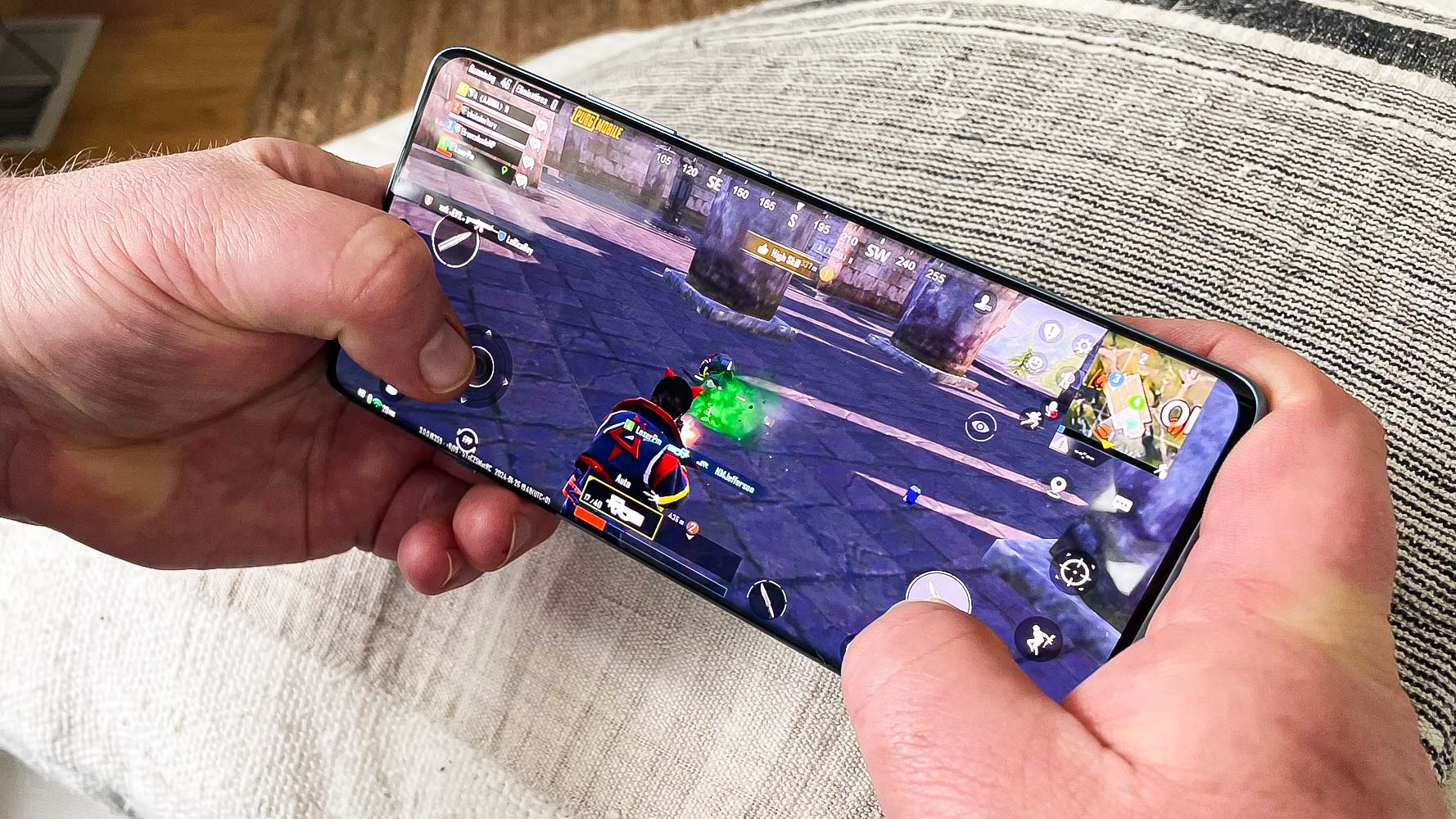
The OnePlus 12R takes a step back from the Snapdragon 8 Gen 3 chipset favored by the OnePlus 12 flagship as a cost-cutting measure, but it’s not a very big step. Instead, the 12R is using the Snapdragon 8 Gen 2 chipset that powered many of the best Android phones of 2023.
As a refresher, the Snapdragon 8 Gen 2 delivered the best performance of any Android phone chipset as it made inroads against Apple's best-in-class mobile silicon, especially for graphics.. I’m happy to say the OnePlus 12R exhibits those same qualities, even if the Snapdragon 8 Gen 2 is no longer the new kid on the block.
| Chipset | Geekbench 6 single-core result | Geekbench 6 multicore result | |
| OnePlus 12R | Snapdragon 8 Gen 2 | 1553 | 5135 |
| Google Pixel 7a | Tensor G2 | 1401 | 3368 |
| Samsung Galaxy A54 | Exynos 1300 | 950 | 2731 |
| Samsung Galaxy S23 FE | Snadragon 8 Gen 1 | 1714 | 4068 |
| Galaxy S23 | Snapdragon 8 Gen 2 for Galaxy | 1881 | 4972 |
In the Geekbench test for general performance, the OnePlus 12R produced single- and multicore scores of 1,553 and 5,135, respectively. These numbers blow away what the Tensor G2-powered Pixel 7a and Exynos 1380-powered Galaxy A54 can do. Really, it’s a result on par with last year’s Galaxy S23 (1,881 and 4,972), which remains a part of Samsung’s phone lineup and costs $200 more than the entry-level 12R. In other words,
Graphics numbers also impress, as the OnePlus 12R produced a result of 84.4 frames per second in the 3DMark Wild Life Unlimited benchmark. That’s ahead of the 72.1fps result turned in by Apple’s iPhone 15 and its A16 Bionic chip. In other words, you’re getting flagship-level graphics performance from a phone with a midrange price tag.
| Chipset | Wild Life Unlimited (fps)-core result | Adobe Premiere Rush (Mins:Secs) | |
| OnePlus 12R | Snapdragon 8 Gen 2 | 84.4 | 1:09 |
| Google Pixel 7a | Tensor G2 | 41.1 | 0:56 |
| Samsung Galaxy A54 | Exynos 1300 | 16.9 | 1:11 |
| Samsung Galaxy S23 FE | Snadragon 8 Gen 1 | 60.2 | 0:49 |
| iPhone 15 | A16 Bionic | 72.1 | 0:24.9 |
The OnePlus 12R isn’t a flawless performer, as it stumbled when we tasked the phone with transcoding a video clip using Adobe Premiere Rush. It took the 12R 1 minute and 9 seconds to finish the job, compared to 59 seconds for the regular OnePlus 12. The Pixel 7a (56 seconds) needs less than 1 minute, too.
As noted, the OnePlus 12R model that will be the most widely available comes with 256GB of storage, an impressive amount of capacity when you consider that much more expensive flagships — many of them made by Apple — offer a mere 128GB of capacity. That 256GB OnePlus 12R model also comes with a generous 16GB of RAM, though U.S. bargain hunters will gladly accept the 8GB/128GB version of the OnePlus 12R that comes with a cheaper price tag.
OnePlus 12R review: Battery life and charging
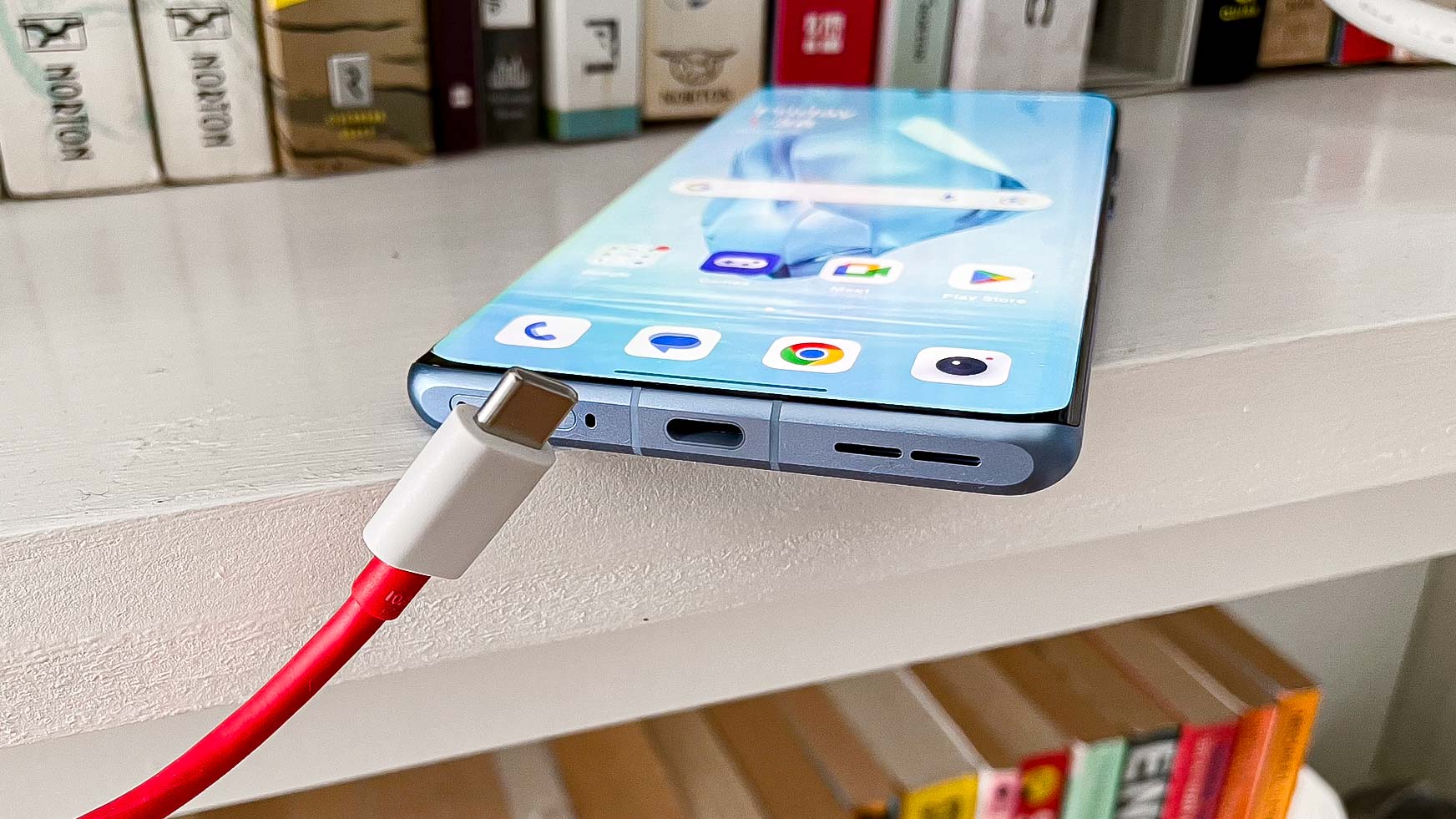
Let’s not beat around the bush — with an average time of 18 hours and 42 minutes on our battery test. That’s the second-best time we’ve ever logged for our best phone battery life list, and it’s the best result of a phone that hasn’t been specifically designed as a gaming device. Outside of our test, in which phones surf the web over cellular until they run out of power, the OnePlus 12R sips power, and I could often go more than a day without needing to recharge.
As for phones in the OnePlus 12R’s price range, the Galaxy A54 reached 11 hours and 46 minutes, but only when its refresh rate was set to 60Hz; otherwise, the phone turned in a 10 hour, 20 minute result. That’s better than average for smartphones, but nowhere near what the OnePlus 12R can produce.
The OnePlus 12R has two things going for it to help with battery life — a massive 5,500 mAh power pack and the Snapdragon’s 8 Gen 2 well-established gift for managing power. It even manages to beat out the OnePlus 12’s 17 hour, 41 minute result.
It’s not all positive on the power front for the OnePlus 12R, as the phone lacks wireless charging support. U.S. users can console themselves with 80W wired charging speeds, which helped the OnePlus 12R reach a 96% charge after 30 minutes. (Outside the U.S., the OnePlus 12R features 100W charging.)
OnePlus 12R review: Software
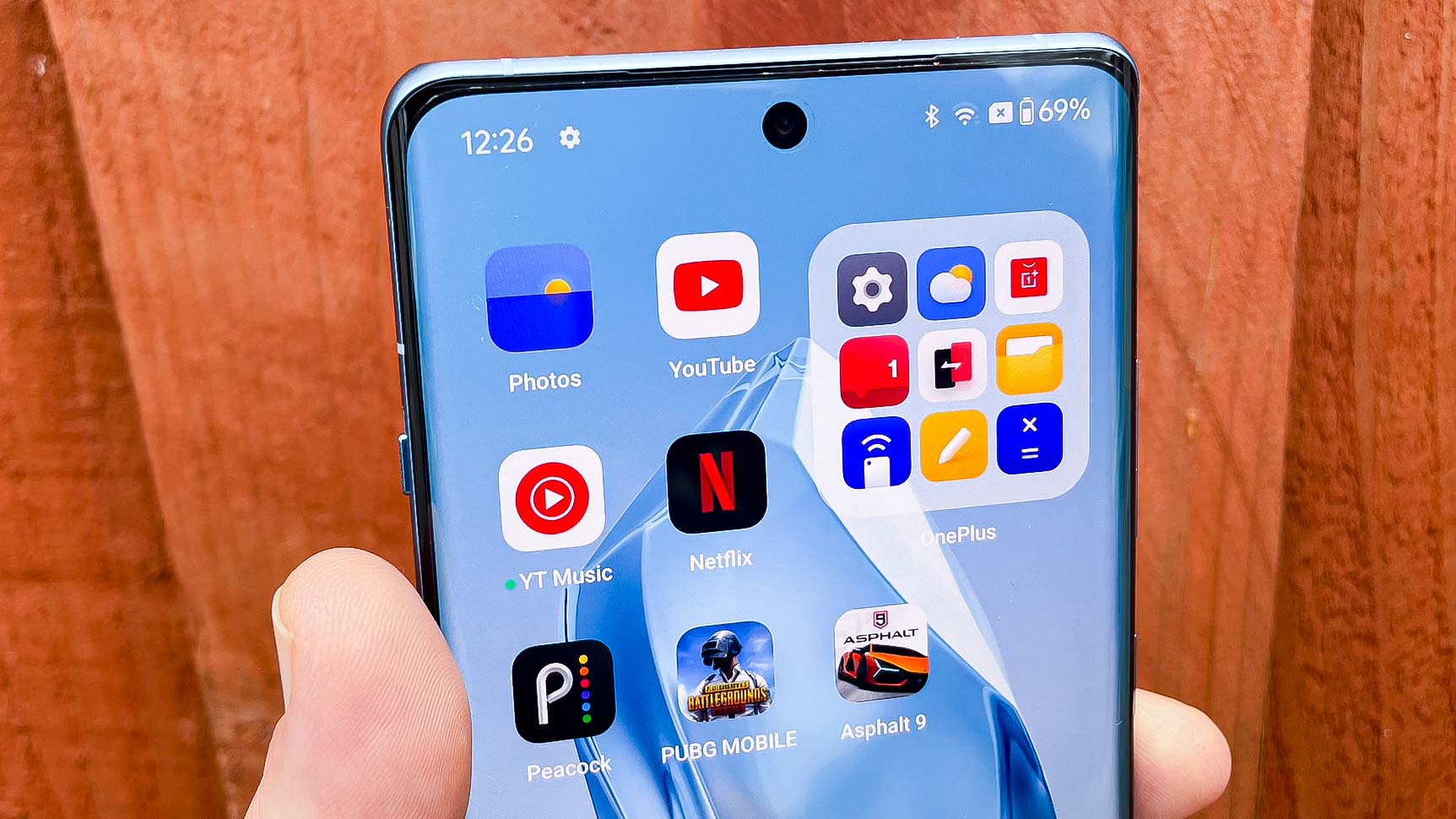
One of the trade-offs you sometimes have to make when opting for a less expensive phone is that you won’t get as much software support as flagship devices receive. Sadly, that’s the case with the OnePlus 12R, which promises three years of software support and an additional year of security updates. That’s one year less in both cases than the OnePlus 12.
The 12R’s software support isn’t out of line for other phones in this price range — the Pixel 7a also gets three years of Android updates (though security updates last an additional two years). But the tide has begun turning, as people want to hold on their phones longer. Samsung, for example, provides four years of software updates and an extra year of security support for both the Galaxy A54 and Galaxy S23 FE.
OnePlus 12R review: Verdict
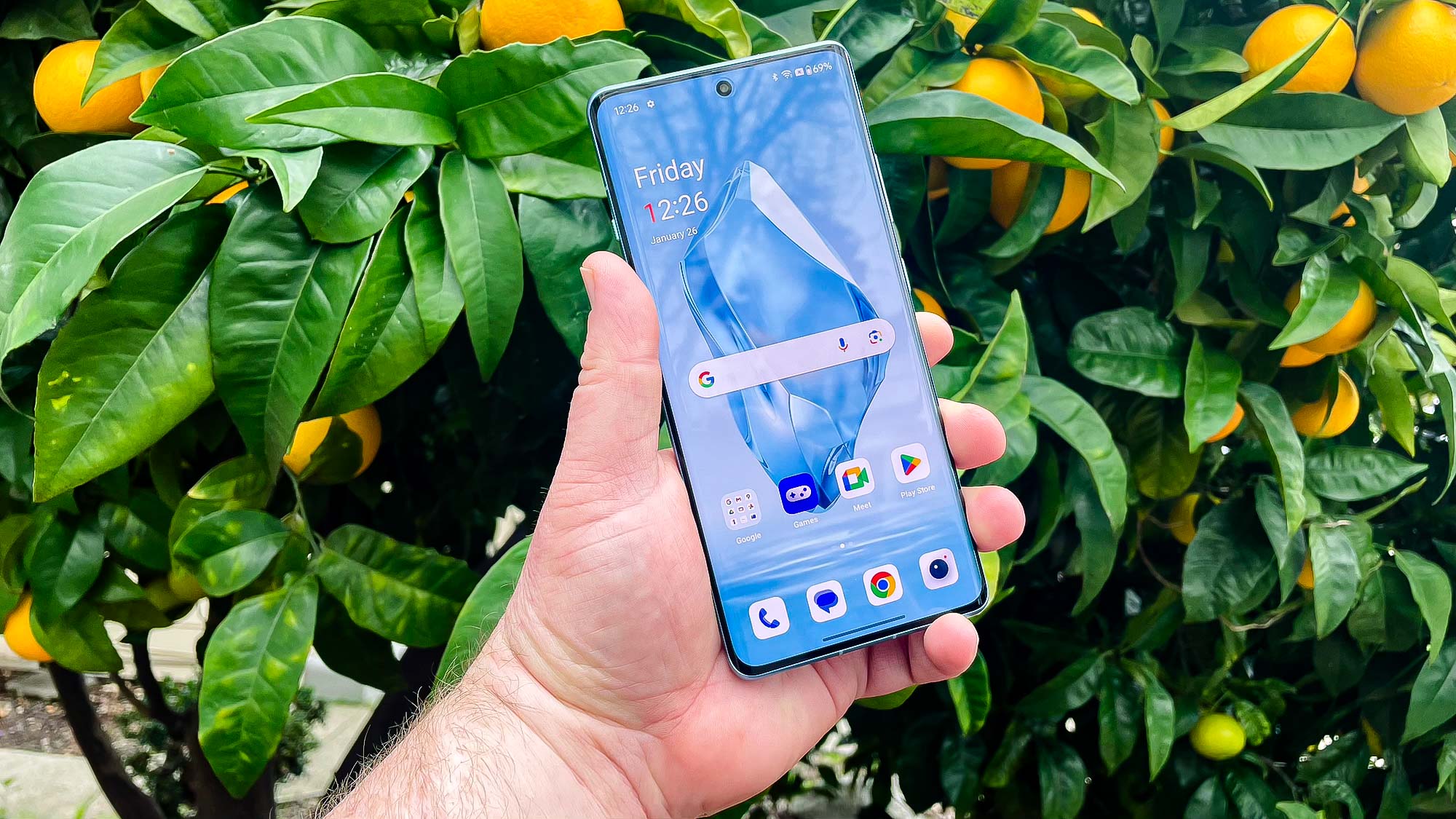
The OnePlus 12R is an excellent low-cost alternative to the OnePlus 12, with the cameras being the only significant downgrade from the flagship. Had the 12R’s cameras performed a little bit better in challenging lighting, I’d have no problem recommending it as the phone to get if your budget is capped at $500. But the Pixel 7a is notably better when it comes to mobile photography, still a major consideration even if you happen to be on a budget.
The value proposition for the OnePlus 12R is also slightly less compelling outside of the U.S. where the lower priced model isn’t available. Still, the 256GB version of the phone has many of the same great qualities going for it, including the strong performance and outstanding battery life. You can buy the OnePlus 12R with the confidence that you’re getting one of the best midrange phones in return.
Philip Michaels is a Managing Editor at Tom's Guide. He's been covering personal technology since 1999 and was in the building when Steve Jobs showed off the iPhone for the first time. He's been evaluating smartphones since that first iPhone debuted in 2007, and he's been following phone carriers and smartphone plans since 2015. He has strong opinions about Apple, the Oakland Athletics, old movies and proper butchery techniques. Follow him at @PhilipMichaels.
